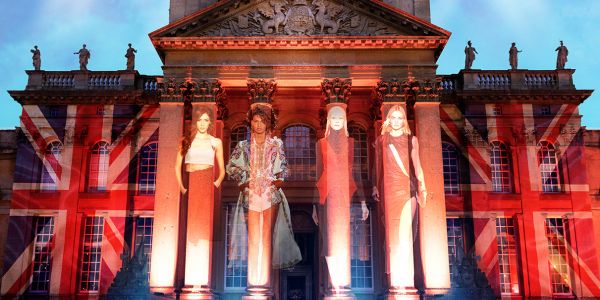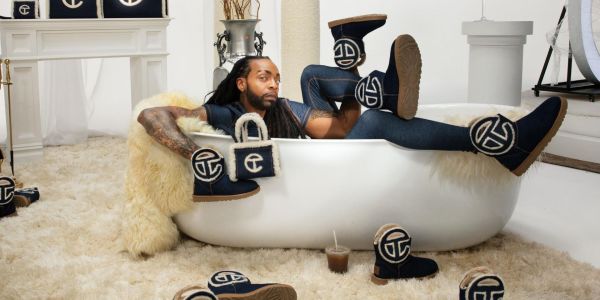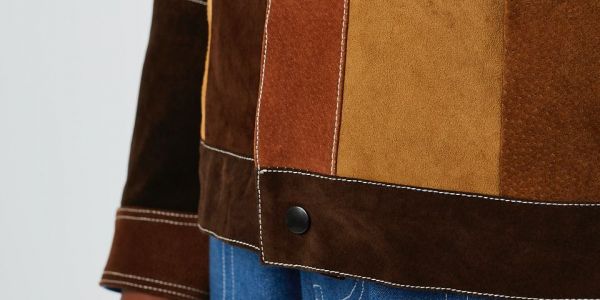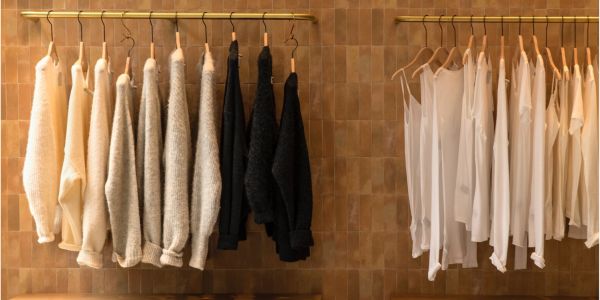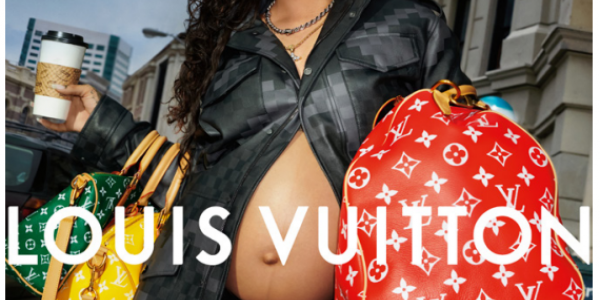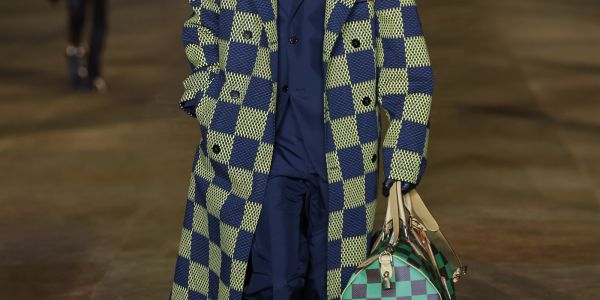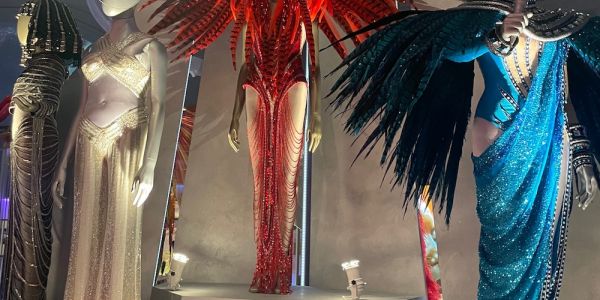Louis Vuitton proudly introduces its highly anticipated Spring 2024 Men’s Capsule Collection in collaboration with renowned artist Tyler, The Creator. Under the visionary guidance of Pharrell Williams, the Men’s Creative Director at Louis Vuitton, Tyler, The Creator brings his unique artistic perspective to the forefront, presenting a standalone proposal for the Maison.
A Fusion of Artistry and Craftsmanship:
The Spring 2024 Men’s Capsule Collection embodies a seamless fusion of Tyler, The Creator’s distinctive visual language with the timeless elegance synonymous with Louis Vuitton. Drawing inspiration from the colours and vibrancy of Spring, the collection showcases trans-seasonal silhouettes infused with the artist’s iconic style.
Key Highlights:
At the heart...
British Fashion Icons Transform Blenheim Palace
Written on .
Blenheim Palace, renowned for its historic grandeur, announces its most significant fashion exhibition to date, featuring a stellar lineup of British fashion icons. From March 23rd to June 30th 2024, visitors will witness a unique collaboration between esteemed designers and the UNESCO World Heritage site, as each fashion house takes over a significant room to create “Icons of British Fashion.”
Blenheim Palace, renowned for its historic grandeur – South Lawn
A Tribute to British Icons:
The exhibition will pay homage to the illustrious careers of British fashion legends, with each room along the visitor route in the 300-year-old Palace dedicated to showcasing the iconic works of renowned designers.
Highlights Include:
Vivienne Westwood: The Great Hall will...
Founder of Bee&Sons Circular Knitwear Launches New Range
Written on .
Crafted in the United Kingdom by skilled artisans using premium Italian yarns sourced from upcycled textiles, this exquisite collection emerges as a testament to sustainable fashion. The initial offering consists of two distinctive cardigans: Oskar, punctuated by an exclamation mark, and Joey, adorned with a question mark. While originally designed with men in mind, these cardigans have captivated women as well, becoming the epitome of versatile boyfriend cardigans.
True to their commitment to minimizing waste, each piece in this collection is meticulously produced in small, eco-conscious batches. For those who miss the first release, pre-order options are available, with a maximum waiting period of two weeks. Bee & Sons proudly contributes to the recycling initiatives in Prato,...
UGG X Telfar Goes Denim
Written on .
Southern California footwear brand UGG launches its sixth drop with Telfar. The brands designed this collection with two things in mind: to make self-expression comfortable for all and Telfar’s slogan, “It’s not for you – it’s for everyone.”
Telfar is a “Unisex, luxury fashion brand founded in 2005 in New York City by Telfar Clemens.” Best known for The Shopping Bag featuring their signature “T” logo, TELFAR has disrupted the luxury bag fashion scene, with most of their online bag drops selling out in mere minutes.
Continuing previous collaborations, this UGG® x TELFAR drop features carryover styles of shoes, shopper bags and apparel.
TheChicGeek says,
“Telfar is rinsing that tote bag. This is the sixth drop? I completely missed this. This isn’t for the...
Trend Reworking Vintage Classics
Written on .
We all love vintage, but finding on-trend vintage in the right size can be an epic and frustrating search. The trend for reworking vintage is gaining pace as a solution to the mountains of unwarranted clothing and give new life to old.
Beyond Remade from the founders of Beyond Retro, and Vintage Threads Rework from Vintage Threads, are just two vintage brands leading the charge.
Top – Vintage Threads Rework
Beyond Remade
Beyond Remade takes recycled materials such as denim, duck canvas or suede and upcycles them into brand new pieces inspired by ‘vintage classics’. These recycled fabrics are remade and reimaged as timeless designs such as dungarees, aprons, and jackets – all with a vintage style. Each piece is completely unique and made from 100%...
Castore Launches AMC Legacy Collection
Written on .
Premium sportswear brand, Castore, is setting a new standard in tennis performance clothing. Designed to fully enhance your game, the Legacy Collection combines the distinct brand ethos of Castore and Andy Murray to deliver unparalleled comfort and optimum performance on the court.
The AMC Legacy Collection is crafted with high-stretch, quick-drying fabrics and the collection ensures unrestricted movement and ease both on and off the court. The collection consists of technical polo tops, training shorts, mesh mix training t-shirts and active shorts in a classic white colourway, with prices starting from £40.
TheChicGeek says, “While Andy Murray felt left out from an awful piece of artwork commissioned by the All England Club, he offers everybody the chance to...
American Vintage Opens In Hampstead
Written on .
American Vintage has opened the doors to a brand new menswear and womenswear space in the London neighbourhood of Hampstead. The store is designed in natural materials and tones, in a nod to the Mediterranean origins of the Marseille brand and its quality materials.
The essence of American Vintage has been celebrated through its collections since 2005. Here, it is diffused into the atmosphere of this 70m² menswear and womenswear store. The design uses wood and terracotta enamel while also leaving space for natural greenery in the store.
This latest store in its London network is just as unique as its predecessors. The brand’s essential materials come alongside new terracotta tile designs.
At the heart of the store is a space with great personality, featuring...
Louis Vuitton Spring-Summer 2024 Men’s Collection Campaign By Pharrell Williams
Written on .
In his first campaign for Louis Vuitton, Pharrell Williams ignites his vision for the Maison with the new Speedy: an adaptation of the emblematic Speedy bag contextualised in imagery featuring Rihanna photographed by Keizō Kitajima and Martine Syms. The proposal – released days after his debut show – expands on the foundation for the Men’s Creative Director’s practice at Louis Vuitton.
It represents the union of two everyday icons: a luxury bag founded in codes of reality, embodied by an artist of universal human appeal. The campaign was styled by Cynthia Lu and Matthew Henson, both long-time collaborators of Pharrell Williams. In the lead-up to the show, a campaign teaser graced the façade of Musée d’Orsay.
The new Speedy is informed by the cosmopolitan nucleus that inspired...
SS24 Pharrell Williams’ Louis Vuitton Menswear
Written on .
Pont Neuf – Paris
The sun was shining on Pharrell Williams, in what was the most anticipated menswear shows of the SS24 season. The show notes say, “The Louis Vuitton Spring-Summer 2024 Men’s Collection orbits the sun as a focal point for opportunity, responsibility and enhancement. In his first proposal for the Maison, Men’s Creative Director Pharrell Williams looks to the sun as a universal source of life: a radiance that energises, heals and unifies humans across cultures and creeds. As our ultimate guiding light, the sun empowers its pupils to study, improve, and share in our appreciation. It teaches us to shine the light – the love – back on our fellow humans.The impact of the sun is present throughout the collection, in the rays of graphics, the warmth of the palette,...
Exhibition V&A DIVA
Written on .
DIVA celebrates the power and creativity of iconic performers, exploring and redefining the role of ‘diva’ and how this has been subverted or embraced over time across opera, stage, popular music, and film. Showcasing over 250 objects drawn from the V&A collection and loans from across the world, the exhibition explores the powerful and personal stories of creativity, ambition, and resilience of some of the best-known divas, from opera goddesses and silent movie stars to sirens of the big screen and today’s global megastars.
TheChicGeek says, “The difficult temporary exhibition space above and in the centre of the Victoria & Albert Museum’s Fashion Gallery is my least favourite. Things just don’t pop here. They really should think about the lighting...

